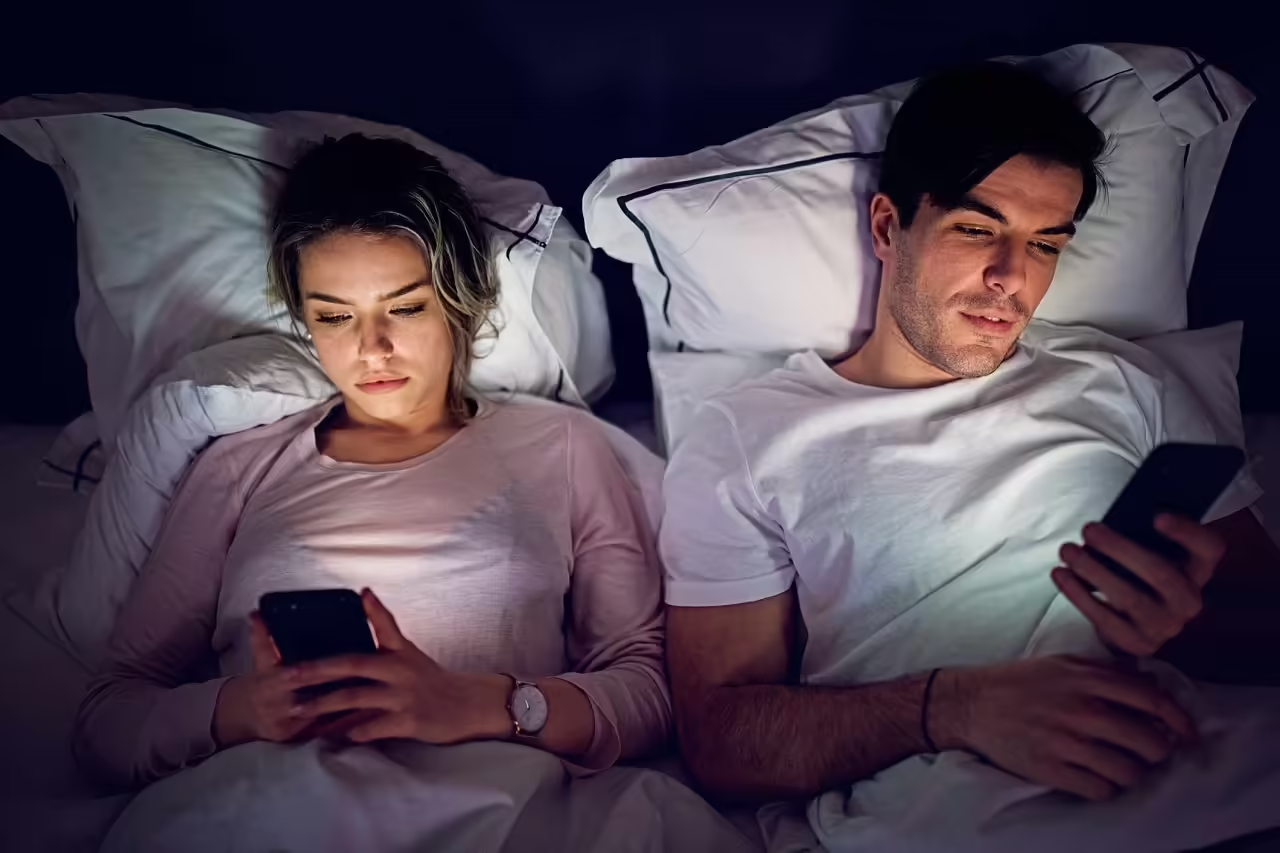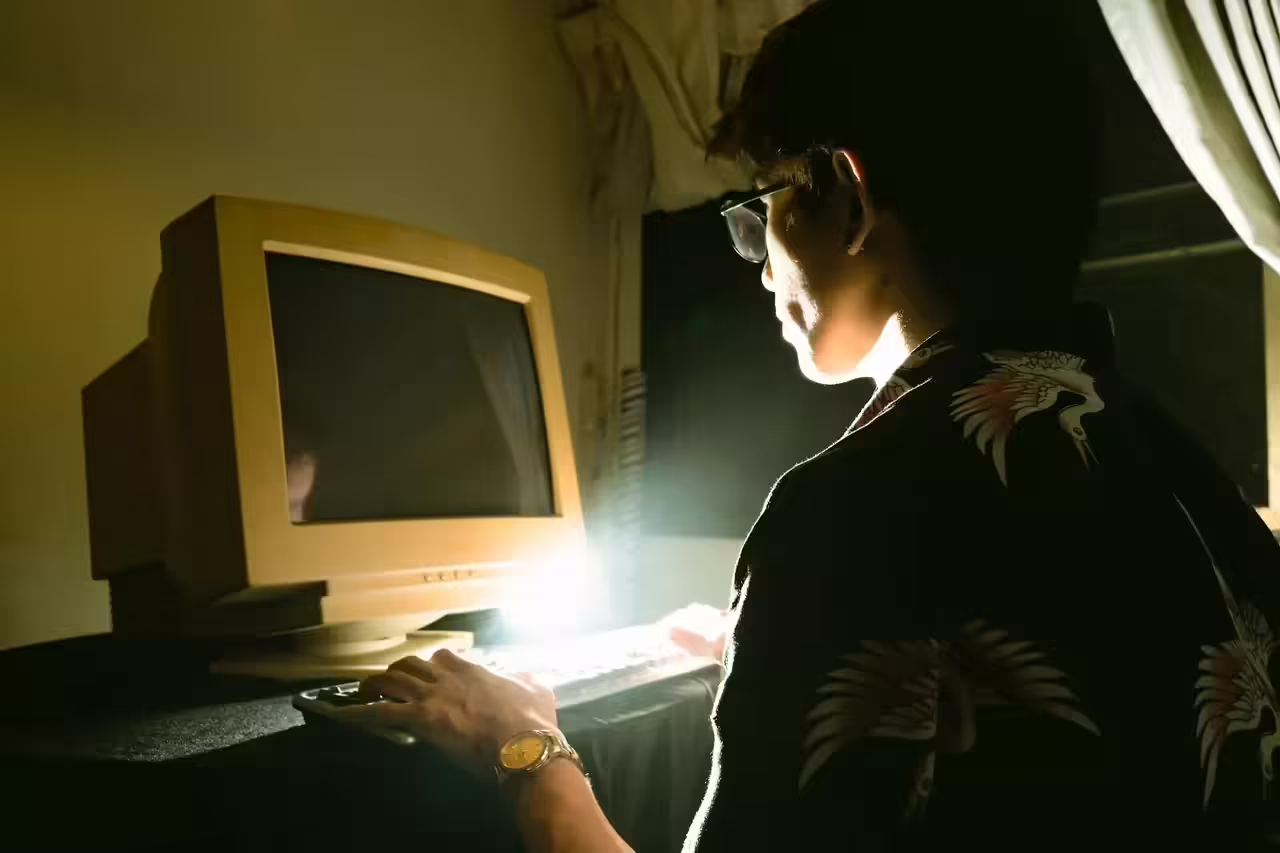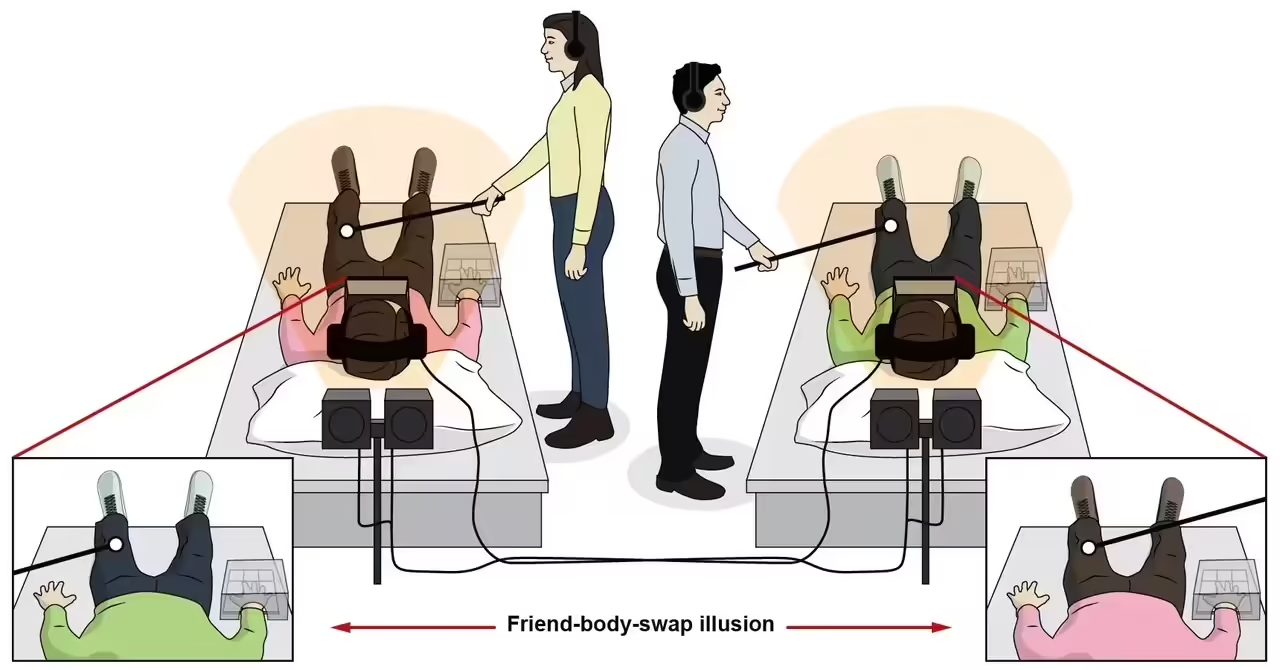
Popularity of Phone Use in Dark Environments
In today’s digital age, using cell phones has become an integral part of daily life. These devices not only serve for making calls and sending messages but also act as multifunctional tools for accessing information, entertaining ourselves, and connecting with the world. However, this growing dependence on cell phones brings a series of risks, especially when used in dark environments. The lack of awareness of these dangers can have significant consequences for physical and mental health.
It is common for people to use their phones in the dark, whether before bed, during the night, or in dimly lit environments. Statistics show that a large majority of smartphone users admit to checking their devices just before going to bed. The convenience and accessibility of mobile technology make using phones in the dark a common practice, but this seemingly innocent habit can entail various risks.
Digital Eye Strain
Prolonged exposure to the blue light emitted by phone screens can cause digital eye strain, a syndrome characterized by symptoms such as dry eyes, blurred vision, headaches, and fatigue. Blue light has a short wavelength that is scattered more easily than other visible lights, which can lead to additional strain on the eyes, especially in low-light conditions.
Sleep Disruption
Using your phone in the dark can interfere with sleep patterns. Blue light inhibits the production of melatonin, the hormone responsible for regulating the sleep cycle. This can make it difficult to fall asleep and affect the quality of sleep, resulting in insomnia and other sleep disorders.
Impact on Mental Health
Constant exposure to social media and other forms of digital communication in the dark can increase stress and anxiety levels. The information overload and constant social comparison can have negative effects on mental health, exacerbated by lack of sleep and prolonged device use.
Postural Problems and Muscle Pain
Using your phone in bed or in uncomfortable postures can cause muscle strains and postural problems. The hunched position commonly adopted can lead to neck, back, and shoulder pain, known as “text neck” or tech neck syndrome.
Risk of Accidents
Using your phone in the dark can also increase the risk of accidents. The distraction caused by the bright screen can result in falls or trips, especially in unfamiliar or cluttered environments.
Impact on Visual Health from Using Phones in the Dark
Visual Fatigue and Eye Strain
Prolonged phone use in the dark can cause a series of visual problems, with visual fatigue and eye strain being two of the most common. The blue light emitted by phone screens has a short wavelength, meaning it scatters more easily and requires additional effort to be focused by the eyes. In dark environments, where the brightness contrast between the screen and surroundings is high, this effort intensifies, resulting in:
- Digital Eye Strain: Symptoms include dry eyes, irritation, redness, and burning sensation. Vision may become blurred, and headaches may occur. This syndrome is a direct manifestation of overexposure to blue light and prolonged visual effort.
- Eye Strain: Keeping your gaze fixed on a small screen for long periods, especially in low light conditions, can cause eye strain. The muscles around the eyes get tired due to the constant effort to focus and readjust, leading to persistent discomfort and temporarily less clear vision.
Potential Long-term Visual Damage
While most symptoms of visual fatigue and eye strain may be temporary, constant and prolonged exposure to blue light can have more serious long-term consequences for visual health.
- Macular Degeneration: Some studies suggest that prolonged exposure to blue light may be related to damage to retinal cells, potentially increasing the risk of developing age-related macular degeneration (AMD). AMD is a condition that can lead to the loss of central vision, severely affecting the ability to perform daily activities such as reading and driving.
- Disruption of Circadian Rhythm and Ocular Health: Blue light affects melatonin production, which can disrupt the circadian rhythm and sleep quality. Poor sleep quality can have side effects that include slower cellular recovery and less rest time for the eyes, exacerbating pre-existing visual problems and contributing to greater visual fatigue.
- Progressive Myopia: Although myopia is primarily a visual focus problem related to the shape of the eye, excessive use of electronic devices, especially in dark environments, has been associated with an increase in the prevalence of myopia. Continuous exposure to screen light and constant close focus may contribute to the progression of this condition.
Sleep Disruption and Circadian Rhythm from Using Phones in the Dark
Effects of Blue Light on Melatonin Production
The blue light emitted by phone screens significantly impacts melatonin production, a crucial hormone for regulating sleep. Melatonin is produced by the pineal gland in the brain and helps synchronize the biological clock, signaling the body when it’s time to sleep and wake up. Blue light has a short wavelength that, when perceived by light receptors in the eyes, inhibits melatonin secretion.
- Melatonin Inhibition: Exposure to blue light before bed can reduce melatonin production more than other wavelengths of light. This is because the photoreceptors in the retina, known as photosensitive ganglion cells, are especially sensitive to blue light and send signals to the brain to suppress melatonin production.
- Circadian Rhythm Disruption: Reduced melatonin disrupts the circadian rhythm, the biological cycle that regulates sleep and wakefulness over a 24-hour period. Exposure to blue light at inappropriate times, such as at night, can shift this cycle, causing difficulties in falling asleep and deregulating sleep patterns.
Consequences for Sleep and Rest
Interference with melatonin production and circadian rhythm disruption has several negative consequences for sleep and rest, affecting both the quantity and quality of sleep.
- Difficulty Falling Asleep: Melatonin inhibition causes the body to not receive the appropriate signals to prepare for sleep, resulting in difficulties falling asleep. People who use their phones just before bed often find it takes them longer to fall asleep.
- Reduced Sleep Quality: Circadian rhythm disruption can lead to fragmented and lower-quality sleep. This means that even if one sleeps for the same amount of time, the sleep is not as restorative as it should be. Lack of deep, continuous sleep can affect the body’s ability to rest and recover properly.
- Daytime Sleepiness: Lack of adequate sleep at night can cause daytime sleepiness and fatigue. This not only affects performance and concentration but also increases the risk of accidents and errors in daily activities.
- Impact on Mental and Physical Health: Insufficient and poor-quality sleep has long-term effects on mental and physical health. It can contribute to issues such as depression, anxiety, and stress, as well as physical conditions like obesity, diabetes, and cardiovascular diseases. Lack of sleep also weakens the immune system, making it more susceptible to illnesses.
Postural Problems and Muscle Pain from Using Phones in the Dark
Common Postures When Using Phones in the Dark
Using phones in the dark is often associated with unhealthy body postures that can lead to muscle and skeletal problems. The most common postures include:
- Lying on Your Back with the Phone Held Above Your Face: This position may seem comfortable initially, but holding the phone high for prolonged periods can cause arm and shoulder strain.
- Lying on Your Side: When lying on your side, it’s common to keep the neck in a twisted position to view the screen, which can cause muscle strain and neck and shoulder pain.
- Sitting with a Hunched Back: When using the phone while sitting in bed or in a chair, many people tend to hunch forward, bending their neck down to look at the screen. This position is particularly harmful to the spine.
- Lying on Your Stomach: Holding the phone while lying on your stomach can cause the neck to be in an uncomfortable, extended position, resulting in neck and back pain.
Risks of Developing Neck, Back, and Shoulder Pain
The postures described above can lead to various musculoskeletal problems due to prolonged strain and poor body alignment:
- Text Neck Syndrome: This term describes the pain and damage in the neck caused by leaning forward to view the phone screen for extended periods. The human neck is not designed to support constant bending, and the added pressure can lead to chronic pain, stiffness, and muscle spasms.
- Upper and Lower Back Pain: The hunched posture and lack of proper support for the spine can cause pain in the upper and lower back. Leaning forward exerts pressure on the spinal discs, which can lead to disc problems and chronic back pain.
- Shoulder and Arm Pain: Holding the phone for long periods can strain the muscles and joints in the shoulders and arms, causing pain and muscle fatigue. Repeatedly adopting these postures can lead to inflammation and repetitive strain injuries.
- Long-term Postural Problems: Maintaining incorrect postures while using the phone can lead to permanent misalignments in the spine and an overall poor body posture. This not only affects musculoskeletal health but can also negatively impact breathing and digestion due to the compression of internal organs.
Using phones in the dark is often done in postures that can cause various musculoskeletal problems, from temporary pain to chronic conditions. The hunched posture and added strain on the neck, back, and shoulders are significant risk factors for developing pain and injuries.
To prevent these problems, it’s important to be aware of posture when using the phone. Some recommendations include:
- Keep the Phone at Eye Level: This helps avoid bending the neck downward.
- Use Phone Supports: Using stands or pillows to hold the phone can reduce strain on the arms and shoulders.
- Take Frequent Breaks: Taking regular breaks to stretch and relax the muscles.
- Practice Strengthening and Stretching Exercises: Specific exercises can help strengthen the neck and back muscles and improve posture.
Adopting these habits can significantly reduce the risks of pain and postural problems associated with using phones in the dark, promoting better musculoskeletal health in the long term.







